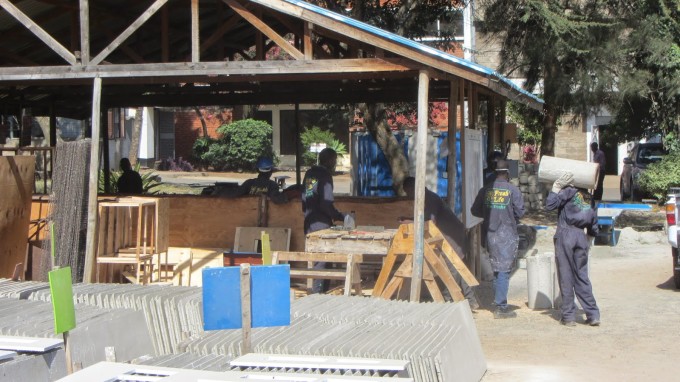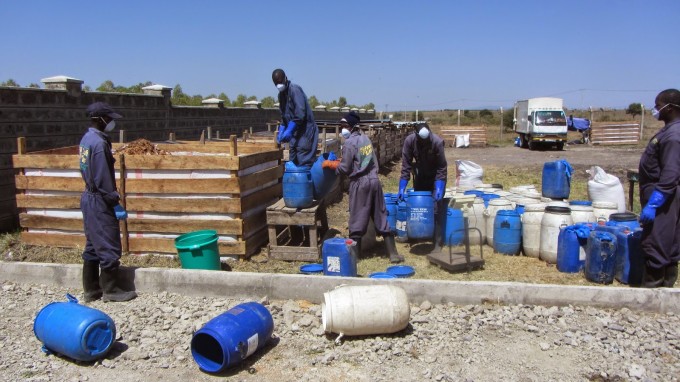Back to all articles
Visit to Sanergy
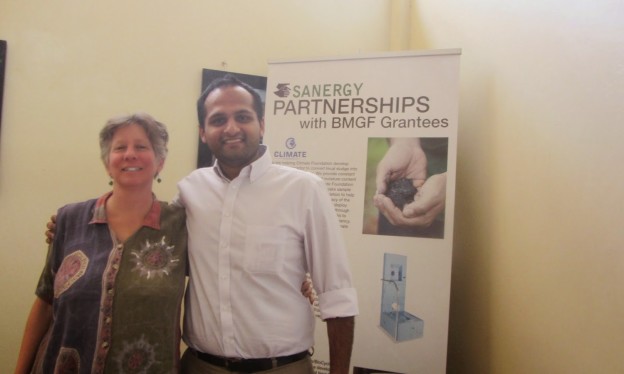
We have safely arrived and jumped right into the heat and into mango season. (YES!) I saw wild giraffes on my first day – just outside of the city.
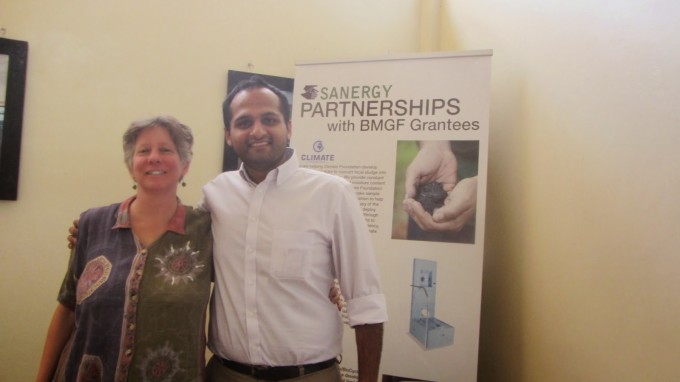 Ani Vallabhaneni, one of the five founders of the Sanergy project, met with me Friday morning for several hours. His team from MIT came to Nairobi in 2009 and has since done the most thoughtful and holistic work in the settlement areas to provide safe and accessible toilets. Their work makes me proud and very hopeful.
Ani Vallabhaneni, one of the five founders of the Sanergy project, met with me Friday morning for several hours. His team from MIT came to Nairobi in 2009 and has since done the most thoughtful and holistic work in the settlement areas to provide safe and accessible toilets. Their work makes me proud and very hopeful.
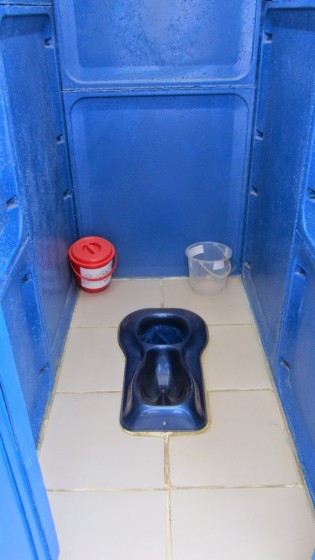 |
| This is Sanergy’s “Fresh Life” toilet. It diverts urine. Toilet paper and hand washing water are supplied. |
Abe and I had conference calls with members of the Sanergy team in the last few months and I had a feeling that I needed to come here to see exactly what is going on. I was right. I learned so much yesterday, my head is spinning. We are kindred spirits in ecological, economic, humanitarian sanitation with nutrient reclamation included (our Rich Earth focus). Their work is being highly documented and they are linking with people all over the globe.
Ani gave me a tour of their toilet construction site. We talked about the iterations of their design, how they are made, installed and maintained. We toured the lab at Sanergy and discussed all of the treatments being used and the analysis being done. They sent samples to our EPA colleague, Diana Aga in Buffalo for analysis. I am pleased that we were able to facilitate the start of that relationship.
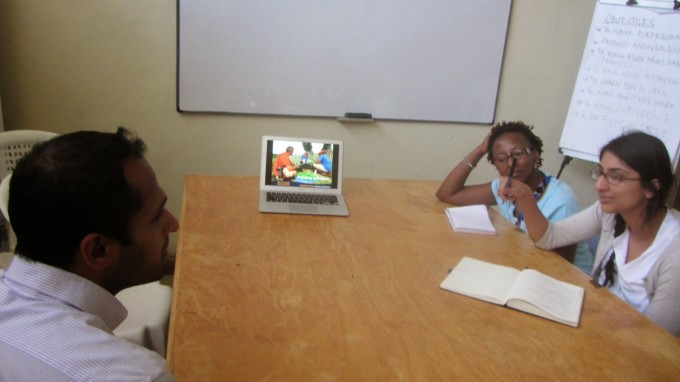 |
| Ani introduced me to two agronomists working with the project. I shared our powerpoint and have been invited back next week to meet with more Sanergy employees. |
In the afternoon I travelled to Sanergy’s waste treatment center about 30 km from the city. They have made incredible headway into the “dry” processing of poop. I took hundred of pictures to share with Abe so that I could explain in detail what they are doing. Here are few:
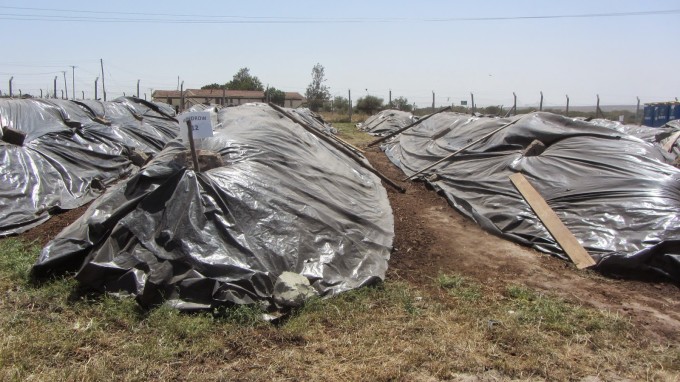 |
| Final composting occurs in windrows. Currently they have a final fertilizer product in 6-8 months. |
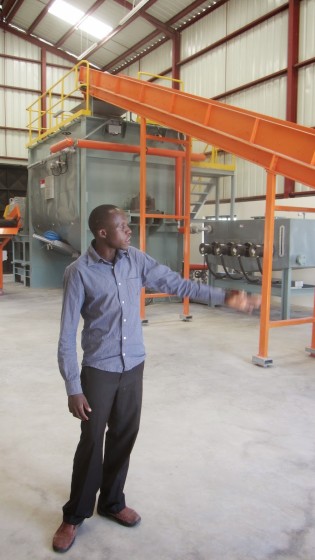 |
| Leonard, my guide, shows me the new treatment machinery. They will be able to process a minimum of 6 tons of fecal matter daily when this is up and running. Built in Bangalore, I believe. |
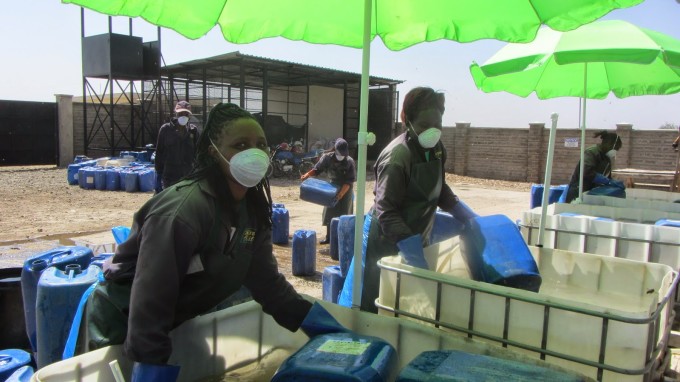 |
| “My husband does this!” I said to these women who are cleaning out the urine containers with bleach. |
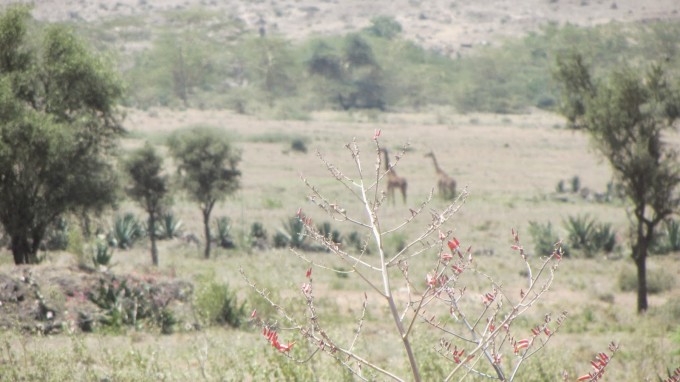 |
| And YES – I saw giraffes! |

